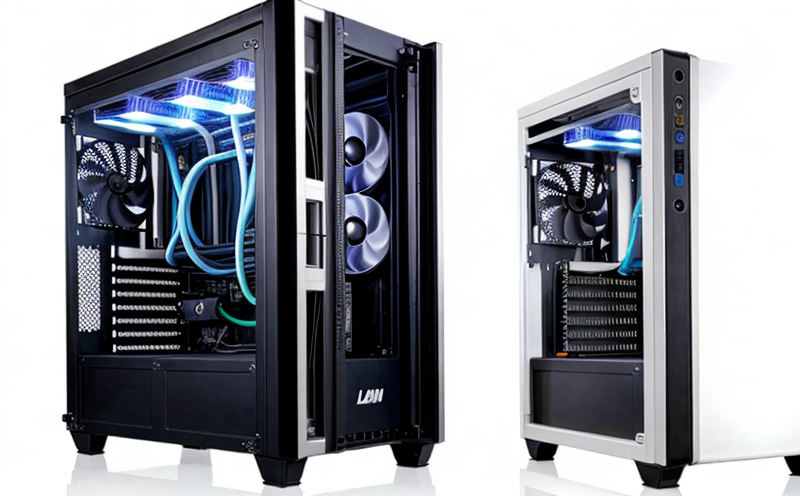EN 13779 Ventilation System Capacity Evaluation
The European Standard EN 13779 provides a method to evaluate the air flow, pressure, and temperature characteristics of ventilation systems in buildings. This standard is critical for ensuring that ventilation systems perform as intended, which directly impacts indoor air quality (IAQ) and overall occupant comfort.
Performance testing according to EN 13779 involves a series of rigorous procedures aimed at measuring the volumetric flow rate, static pressure, and temperature within a building's ventilation system. These measurements are taken under controlled conditions that simulate real-world operating scenarios. The standard specifies detailed protocols for setting up test rigs, calibrating instruments, and conducting tests.
The primary objective of this service is to ensure compliance with the specified performance criteria outlined in EN 13779. Compliance ensures that ventilation systems are not only efficient but also meet the necessary standards set by regulatory bodies. This compliance can lead to significant energy savings and improved IAQ, which are crucial for maintaining a healthy indoor environment.
Testing according to this standard is particularly important in sectors such as commercial buildings, healthcare facilities, schools, and other public spaces where ventilation plays a key role in maintaining safe and comfortable conditions. By adhering to EN 13779, organizations can ensure that their systems are operating efficiently and effectively.
The testing process involves several steps. Initially, the ventilation system is set up according to the specifications provided by the manufacturer or designer. This includes all components such as fans, ductwork, grilles, and dampers. The test rig is then configured to simulate typical operational conditions, including variations in external temperature and load.
During the testing phase, various instruments are used to measure key parameters like volumetric flow rate, static pressure, and temperature at multiple points within the ventilation system. These measurements are taken before and after the system reaches steady-state operation to ensure that any discrepancies can be identified early in the process.
The data collected is then analyzed using statistical methods prescribed by EN 13779. This analysis helps determine whether the ventilation system meets the performance criteria specified in the standard. Any deviations from these criteria are noted, and corrective actions may be recommended to bring the system into compliance.
One of the key aspects of this service is its ability to identify potential issues before they become significant problems. By conducting regular performance evaluations according to EN 13779, organizations can ensure that their ventilation systems are operating at peak efficiency and contributing positively to IAQ. This not only enhances comfort for occupants but also reduces operational costs associated with energy consumption.
Another important benefit of this service is its contribution to sustainability efforts. Efficient ventilation systems play a crucial role in reducing greenhouse gas emissions by optimizing energy use. By ensuring that systems are operating efficiently, organizations can minimize their environmental footprint while maintaining high levels of IAQ.
Customer Impact and Satisfaction
- Better Indoor Air Quality: Ensures that the air inside buildings is clean and free from harmful pollutants, leading to healthier environments for occupants.
- Increased Efficiency: Identifies areas where energy can be saved by optimizing ventilation system performance.
- Compliance with Regulations: Helps businesses avoid penalties associated with non-compliance with local and international standards.
- Improved Comfort: Ensures that the temperature, humidity, and air movement within a building are optimally controlled, enhancing user satisfaction.
Environmental and Sustainability Contributions
Evaluating ventilation system capacity according to EN 13779 can have significant environmental benefits. By ensuring that systems operate efficiently, this service helps reduce the overall energy consumption of buildings. This reduction in energy use translates directly into lower greenhouse gas emissions, contributing positively to global sustainability efforts.
In addition to reducing carbon footprints, efficient ventilation systems also contribute to better IAQ, which is essential for maintaining healthy indoor environments. Improved air quality can lead to reduced absenteeism due to illness and increased productivity among employees or students. These factors collectively enhance the overall well-being of occupants while supporting broader sustainability goals.
The service provided here not only meets regulatory requirements but also goes beyond compliance by offering valuable insights into how ventilation systems can be optimized further. This proactive approach ensures that buildings remain energy-efficient and environmentally friendly even as technology evolves and standards are updated.
Use Cases and Application Examples
| Application Area | Description |
|---|---|
| Hospital Buildings: | Ensuring proper ventilation in healthcare facilities is vital for patient safety and comfort. Testing according to EN 13779 helps maintain the highest standards of IAQ, which is crucial for preventing infections and ensuring patient recovery. |
| Schools: | Proper ventilation in educational institutions supports learning environments by providing fresh air and reducing the risk of respiratory illnesses among students. Regular testing ensures that these critical spaces are kept healthy and safe for all occupants. |
| Offices: | In commercial office settings, efficient ventilation systems enhance employee productivity by creating comfortable working conditions. This service helps maintain optimal IAQ, contributing to increased job satisfaction and reduced absenteeism. |
| Industrial Facilities: | In industrial environments, ventilation plays a crucial role in maintaining safe working conditions for employees. Testing according to EN 13779 ensures that systems are operating effectively, reducing the risk of accidents and improving overall safety. |





